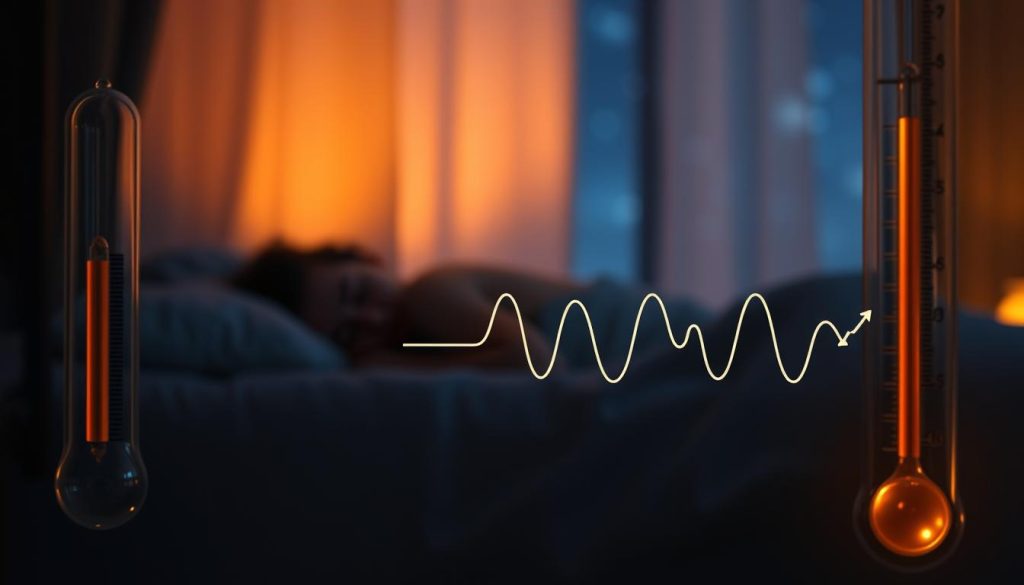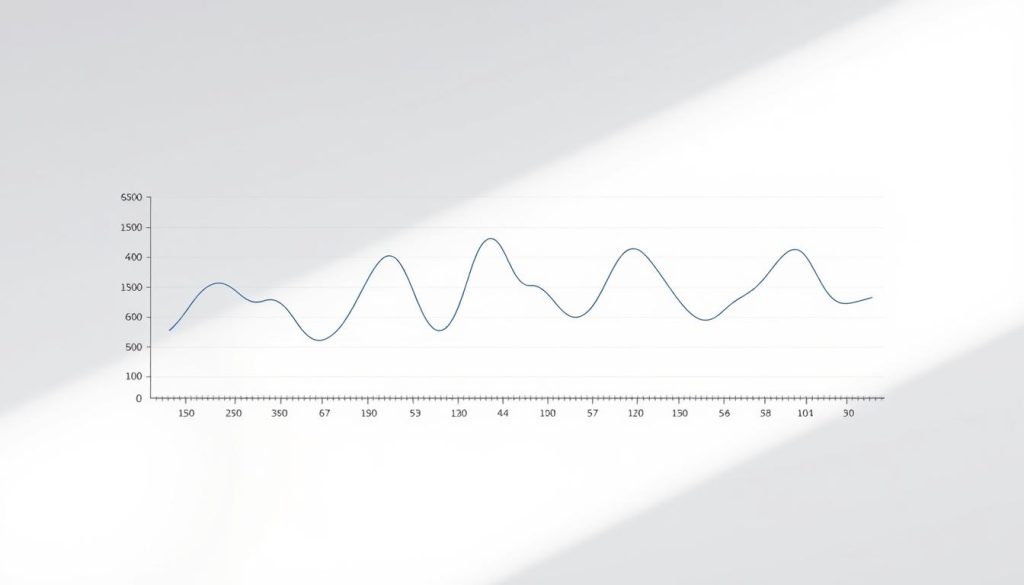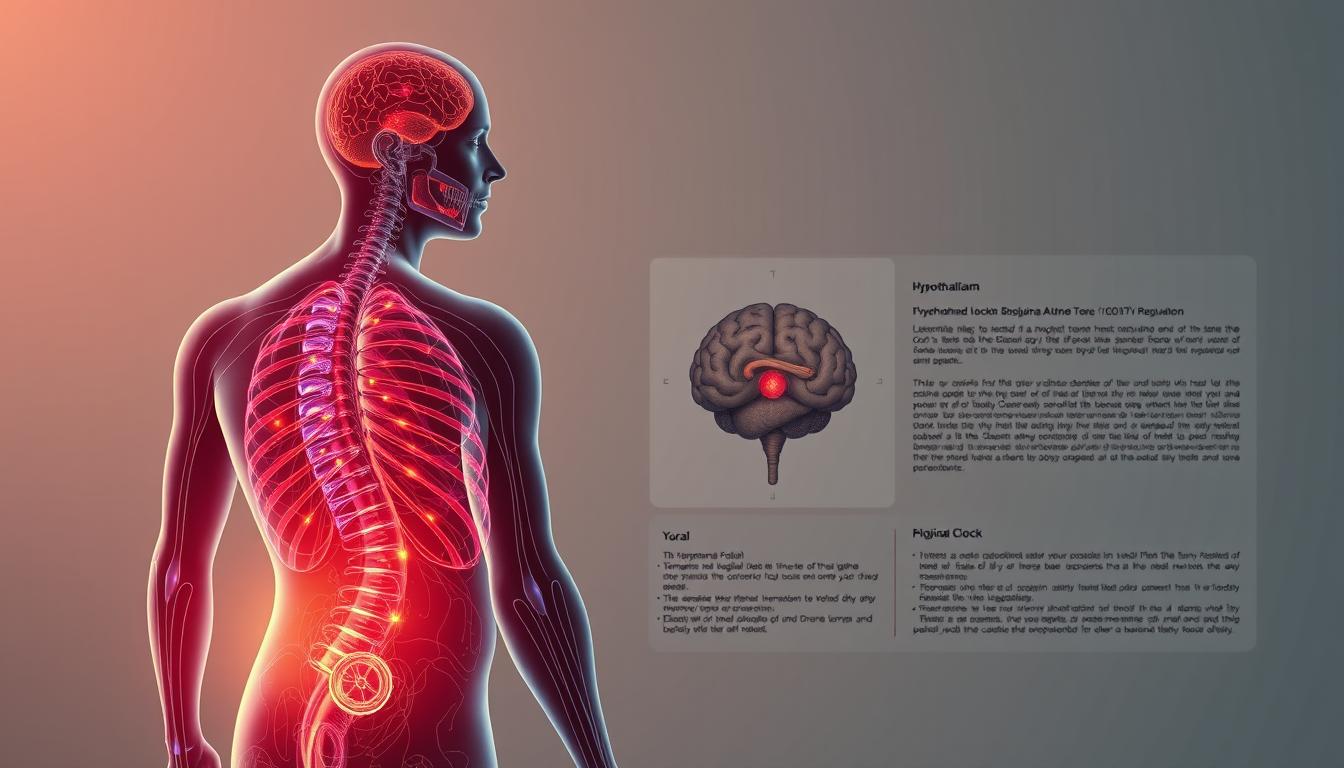Your body works like a high-tech clock, adjusting its heat levels all day. This process matches your sleep and wake cycles perfectly. It’s not just random changes.
This system is like nature’s own thermostat. It has evolved over millions of years. Your body temperature rhythm controls more than just feeling hot or cold.
From waking up to falling asleep, your core temperature changes. These shifts send signals to all your cells. Your biological clock affects more than just sleepiness or alertness.
This internal timing system also influences hormone production, immune function, and mood. Knowing how these natural changes work can greatly improve your health and well-being.
Understanding Circadian Rhythms and Body Temperature
Learning about your body’s internal clock can improve sleep, energy, and wellness. This connection between time and temperature impacts your daily life. Your body heats up and cools down on a precise schedule, perfected over millions of years.
Chronobiology shows how biological rhythms keep you healthy and alert. Scientists found that internal temperature changes are key signals. They help coordinate your body’s functions.

What Are Circadian Rhythms?
Circadian rhythms are your body’s 24-hour cycles. They control when you feel awake, sleepy, hungry, and alert. These rhythms exist in nearly every cell of your body, not just your brain.
Your master clock is in a small part of your brain called the suprachiasmatic nucleus. It receives light signals from your eyes. When it gets dark, your master clock triggers melatonin release, making you feel sleepy.
These rhythms affect more than sleep. They influence hormone levels, blood pressure, heart rate, and body temperature. Even your immune system follows circadian patterns, making you more susceptible to illness when your sleep schedule is off.
The Science Behind Body Temperature Regulation
Your body’s thermoregulation system is incredibly sophisticated. It works around the clock to maintain your core temperature. The hypothalamus acts as your body’s thermostat, constantly monitoring your internal temperature and making adjustments as needed.
During the day, your core body temperature rises to help you stay alert and active. As evening approaches, your temperature drops, signaling it’s time to sleep. This temperature drop is crucial for your sleep-wake cycle.
Your body uses several methods to control temperature. Blood vessels near your skin can widen or narrow to release or conserve heat. Your muscles can shiver to generate warmth, or you might start sweating to cool down. Even your behavior changes – you might seek shade when hot or put on a sweater when cold.
The amazing thing about thermoregulation is how it anticipates your needs. Your body temperature starts dropping about two hours before your usual bedtime, even if you’re not tired yet. This shows how deeply connected your temperature control is to your internal clock.
The Role of Body Temperature in Sleep Patterns
Temperature regulation is key to a good night’s sleep. Your body’s internal thermostat doesn’t just keep you comfortable. It also helps control when you feel sleepy and when you wake up feeling refreshed.
As evening comes, your body temperature drops by one to two degrees Fahrenheit. This drop is not random. It’s your body’s way of getting ready for sleep and recovery.
This drop in temperature tells your brain to make melatonin. Melatonin is the hormone that makes you sleepy. It also slows down your metabolism and heart rate. These changes help you sleep deeply and restfully.
How Temperature Affects Sleep Quality
Your sleep quality depends on your body’s ability to cool down naturally. If your body cools down well in the evening, you’ll fall asleep quickly. This usually takes 15 to 20 minutes after lying down.
Those who have trouble sleeping often have bodies that don’t cool down right. Their temperature stays high when it should be dropping. This messes up their sleep-wake cycle and delays melatonin production.

Temperature changes during sleep also affect how deeply you rest. Your body is coolest around 4 to 6 AM. This is when you’re in your deepest sleep, repairing tissues and memories.
If your bedroom is too warm or your body can’t cool down, you’ll wake up tired. This is even if you’ve slept for eight hours.
The Impact on Sleep Disorders
Many sleep disorders come from temperature issues. Insomnia often means your body stays too warm in the evening. This makes it hard to cool down for sleep.
Delayed sleep phase syndrome makes your body cool down later. This makes you a natural night owl, struggling with early mornings.
Sleep apnea also messes with temperature control. The breathing stops during sleep prevent your body from cooling down. This creates a cycle where poor temperature control worsens sleep quality.
Knowing these connections helps you improve your sleep. Simple changes to support your natural temperature patterns can make a big difference. They can help you fall asleep faster and wake up feeling refreshed.
Daily Fluctuations of Body Temperature
Your body temperature changes throughout the day in a fascinating way. This change, called diurnal variation, is like an internal clock. It helps your body work better by changing its temperature.
These small changes in temperature send big signals to your body. They tell you when to be awake, sleepy, or full of energy. Knowing this rhythm can help you live in sync with your body.

Temperature Patterns Throughout the Day
In the early morning, your body temperature is at its lowest. This usually happens between 4 and 6 AM, when it’s around 97.4°F (36.3°C). This low temperature helps your body repair itself while you sleep.
As morning comes, your temperature starts to rise. This warming helps you wake up and get ready for the day. It keeps going up until the late afternoon or early evening.
By 6 to 8 PM, your body temperature is at its highest, around 99.5°F (37.5°C). This is a big change from the morning. It shows a big shift in your body’s energy and how it works.
What Influences Your Temperature Rhythm
Many things can change how your body temperature changes during the day. Getting older can make these changes smaller. Being more active can help keep your temperature rhythm strong.
Hormones also play a big role. Women may notice changes with their menstrual cycle. Both men and women experience changes as they get older. Some medicines can also affect your temperature rhythm.
Things around you can also change your body temperature. The temperature of your room, how much light you get, and the season can all affect it. People who work at night or travel a lot may find it hard to keep their temperature rhythm.
Not sleeping at the same time every day can mess up your temperature rhythm. It can take days or weeks for your body to adjust. This can make you feel tired, change your mood, and make you less sharp until you get back in sync.
The Connection Between Body Temperature and Metabolism
Core body temperature and metabolism work together to affect how your body burns calories. This partnership is more complex than many realize. Your metabolic rate changes with your body’s temperature cycles.
When your body temperature goes up, your metabolism speeds up too. If it goes down, your metabolism slows down. This affects how you digest food and your energy levels.
How Temperature Affects Metabolic Rate
Your core body temperature controls your metabolism speed. In late afternoon and early evening, your metabolism can be 10-15% faster. This means you burn more calories during these warmer times.
The science behind this is interesting. Higher temperatures make your cells’ enzymes work faster. These enzymes break down nutrients into energy. So, when your body is warmer, it burns energy quicker.
Here are the key ways temperature influences your metabolic rate:
- Increased enzyme activity during warmer body temperatures
- Enhanced nutrient processing and absorption
- Improved cellular energy production
- Better fat oxidation during temperature peaks
- More efficient protein synthesis
This connection explains why you might feel more energetic at certain times. Your body is working faster when it’s warmer.
Circadian Rhythms and Weight Management
Knowing your body’s temperature rhythms can change how you manage weight. The timing of meals, exercise, and sleep affects calorie processing. Working with these rhythms makes weight control easier.
Eating big meals when your body temperature is high helps process calories better. This usually happens in late afternoon and early evening. Eating big meals when it’s cooler can lead to weight gain.
Smart weight management strategies include:
- Schedule larger meals during peak temperature hours (4-7 PM)
- Keep breakfast and late-night snacks lighter
- Time workouts to coincide with temperature peaks
- Use light exposure to optimize temperature patterns
- Maintain consistent sleep schedules to support rhythm stability
When you exercise during warmer periods, you burn more calories and perform better. Your body is ready for activity during these times.
The link between temperature rhythms and weight management goes beyond meal timing. Your body’s fat storage and burn changes with temperature. In cooler periods, it tends to store more calories as fat.
Seasonal Changes and Body Temperature
Nature’s changing seasons make your body temperature change too. Your body temperature rhythm works with daylight, temperature, and other cues all year. It’s a remarkable adjustment.
Your body is amazing at staying balanced. It makes small but key changes with the seasons. These changes help you stay healthy and comfortable as the world changes.

Adjustments to Body Temperature in Different Seasons
Winter is when your body temperature changes the most. It lowers its temperature to save energy. This keeps you warm when it’s cold outside.
In winter, your temperature peaks and valleys change. You might feel warmer later in the day. And cooler in the morning.
Summer brings different changes. Your body works harder to cool down. This means it’s more active when it’s hot.
Here are key seasonal temperature adjustments your body makes:
- Winter: Lower baseline temperatures and delayed temperature peaks
- Spring: Gradual warming and earlier temperature rises
- Summer: Higher cooling demands and extended temperature regulation
- Fall: Preparation for winter with slowly decreasing baseline temperatures
The Influence of Seasonal Affective Disorder (SAD)
Seasonal Affective Disorder happens when seasonal changes affect your body temperature rhythm. Less daylight in winter is the main cause. This disrupts your natural temperature cycle.
SAD changes your temperature patterns in several ways. You might not reach your usual temperature peaks. The timing of these changes can be off.
These changes lead to common SAD symptoms. You might feel tired during the day. Sleep problems and low energy are common too.
But, there’s hope. Light therapy can help. It exposes you to bright light in the morning. This resets your internal temperature clock.
Other strategies include:
- Maintaining consistent sleep schedules throughout seasonal changes
- Using temperature regulation techniques like warm baths before bedtime
- Exercising regularly to support healthy temperature patterns
- Creating warmer, brighter living spaces during winter months
Knowing about these seasonal patterns helps you prepare. You can use specific strategies to stay healthy. This knowledge lets you work with your body’s natural rhythms.
Tips for Aligning Your Body Temperature with Circadian Rhythms
Understanding how small changes can make a big difference is key. Your body’s thermoregulation system responds well to consistent changes in your environment and daily habits. You don’t need expensive equipment or drastic lifestyle changes to support these natural processes.
Many people don’t realize how much control they have over their body temperature. Simple changes in your surroundings and routines can greatly improve your sleep and overall well-being.
Creating a Sleep-Conducive Environment
Your bedroom environment is crucial for healthy thermoregulation during sleep. The ideal bedroom temperature is between 65-68°F (18-20°C). This helps your body cool down naturally for rest.
Choose breathable bedding materials like cotton or bamboo for better air circulation. Avoid heavy comforters and synthetic fabrics that trap heat. Use a fan or adjust your air conditioning to keep temperatures consistent at night.
Taking a warm bath or shower 1-2 hours before bed can help cool down your body. This supports your natural temperature drop and makes falling asleep easier. The warm water causes blood vessels to dilate, helping your body release heat more efficiently.
Lifestyle Changes for Better Temperature Regulation
Morning sunlight exposure is a powerful tool for resetting your circadian clock. Spend 10-15 minutes outside within the first hour of waking up. This natural light exposure helps regulate your body’s internal temperature patterns throughout the day.
Exercise timing is important for temperature regulation. Morning or early afternoon workouts support your natural circadian rhythms and help maintain healthy temperature fluctuations. Avoid late evening exercise, as it can raise your core body temperature and interfere with cooling before sleep.
Stay hydrated throughout the day to support your body’s natural cooling mechanisms. Proper hydration helps your circulatory system function efficiently and maintains your ability to regulate temperature through sweating and blood vessel dilation.
Avoid heavy meals, caffeine, and alcohol close to bedtime, as they can interfere with your natural temperature drop. Instead, eat your largest meals earlier in the day when your metabolism is higher. Light evening snacks are fine, but give your body time to digest before sleep.
Simple relaxation techniques like deep breathing or gentle stretching can help lower your core body temperature and prepare your system for rest. These practices activate your parasympathetic nervous system, which supports the natural cooling process that occurs during sleep preparation.
Future Research on Circadian Rhythms and Body Temperature
The study of circadian rhythms is opening new paths for personalized medicine. Scientists are finding ways to use body temperature patterns for better health.
Emerging Studies and Technologies
Wearable devices now track body temperature all day. These tools give doctors real-time data on your natural rhythms. This helps them time medical treatments just right.
New studies show cortisol and temperature patterns are complex. When doctors understand these, they can give medications at the best time. This reduces side effects and boosts healing.
Smart home tech is being made to adjust room temperature based on your rhythms. These systems help keep your body’s natural temperature cycle.
Potential Health Benefits of Understanding Body Temperature Rhythms
Personalized chronotherapy could change disease treatment. Doctors might schedule surgeries when your body is ready to heal. Athletes could train when their cortisol supports peak performance.
Future workplaces might adjust schedules based on employee temperature rhythms. This could increase productivity and reduce fatigue. Schools might time classes when students’ brains are most alert.
Knowing your body temperature rhythm gives you control over your health. Small daily changes can lead to big improvements in how you feel and perform.

